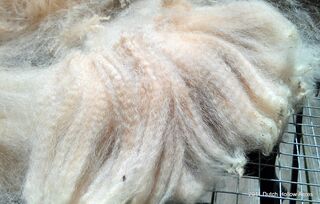Thursday, March 10, 2022
All About Alpaca Fiber

Raw Alpaca Fiber
What makes Alpaca fiber so amazing?
Alpaca fiber is hypoallergenic- it does not contain lanolin, an oil commonly found in sheep's wool which requires harsh chemicals detergents to wash out before processing. Alpaca fiber's microscopic scales are also shorter than wool of the same fineness, making it feel smoother on the skin.
Alpaca fiber is moisture wicking-it is water resistant and possesses moisture wicking properties. The fiber's semi-hollow core allows it to transfer moisture away from the skin, letting it evaporate, keeping you more comfortable for longer in damp conditions.
Alpaca is thermo-regulating fiber that performs well in a variety of conditions, due to unique semi-hollow fibers, which can efficiently trap and retain heat. Alpaca naturally insulates and warms the body, but remains breathable due to its lightweight nature.
Alpaca fiber is odor resistant. The smooth structure of alpaca fiber holds less bacteria and other odor causing agents, making it naturally odor resistant and anti-microbial.
Alpaca fiber is sustainable.It is a renewable and biodegradable resource harvested annually when alpacas are sheared. Shearing does not harm the animal. In fact, shearing is necessary to maintain proper body temperature and good health.
Alpaca is naturally colorful and versatile.
There are two distinct breeds of alpaca: suri and the more common huacaya. Each produce fiber suitable for different applications. Fiber is measured in micron count. The lower the micron, the finer the fiber. Alpaca fiber is naturally colorful without dye, as alpacas can be found in over 22 natural color variations.